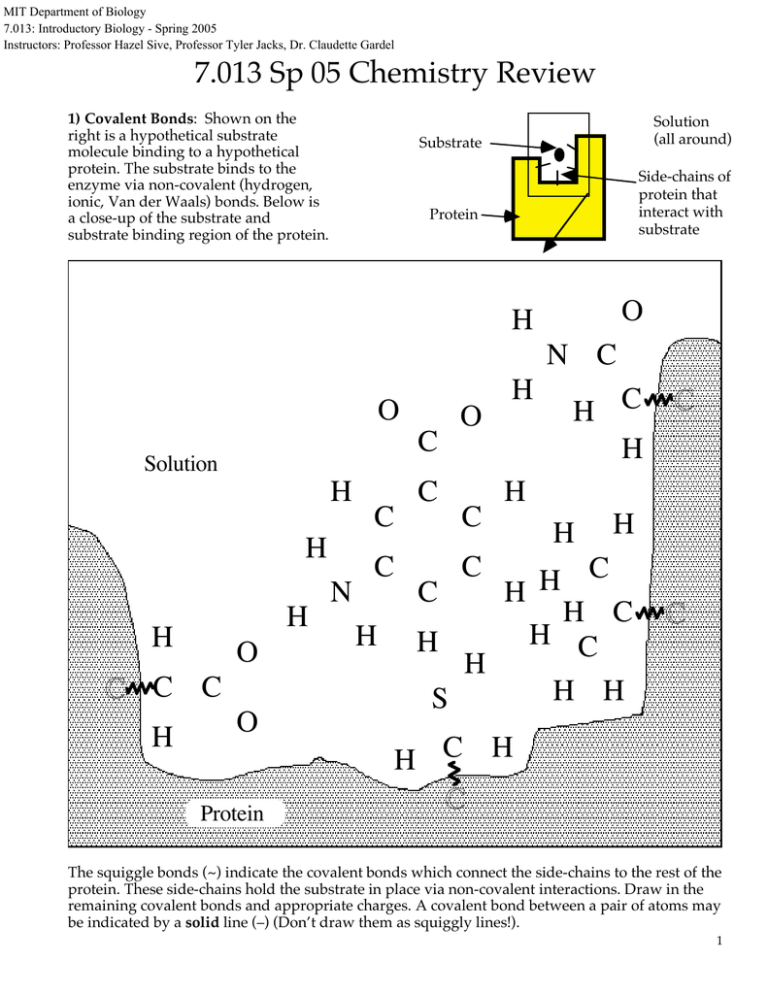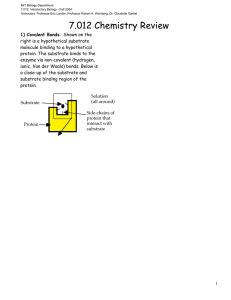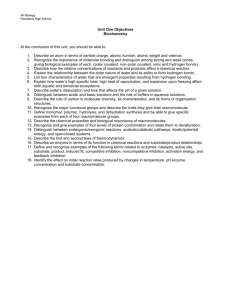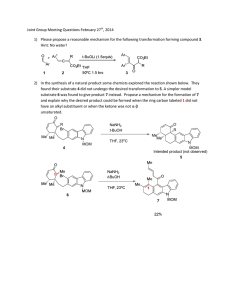Document 13478217
advertisement

MIT Department of Biology 7.013: Introductory Biology - Spring 2005 Instructors: Professor Hazel Sive, Professor Tyler Jacks, Dr. Claudette Gardel 7.013 Sp 05 Chemistry Review 1) Covalent Bonds: Shown on the right is a hypothetical substrate molecule binding to a hypothetical protein. The substrate binds to the enzyme via non-covalent (hydrogen, ionic, Van der Waals) bonds. Below is a close-up of the substrate and substrate binding region of the protein. Solution (all around) Substrate Side-chains of protein that interact with substrate Protein O H N C O C Solution H H H H O C C C H O Protein N C C H C C H O C C H H H C H C H H H C H H H C H C S C H H H C H C The squiggle bonds (~) indicate the covalent bonds which connect the side-chains to the rest of the protein. These side-chains hold the substrate in place via non-covalent interactions. Draw in the remaining covalent bonds and appropriate charges. A covalent bond between a pair of atoms may be indicated by a solid line (–) (Don’t draw them as squiggly lines!). 1 7.01 Chemistry Review, continued 2) Non-covalent interactions: (Ionic, Hydrogen, and Van der Waals' bonds). a) Each of the 4 side chains of the protein which interact with the substrate are numbered on the figure above. For each side chain, state which type(s) of interactions it could have with the substrate in the configuration shown above. Also classify each side chain as hydrophobic, hydrophilic-polar, or hydrophilic-charged. Group Interaction(s) of Group with Substrate Classification of Group (1) (2) (3) (4) 3) Substrate Analogues One way to study the non-covalent interactions between substrate and protein is to synthesize molecules similar to the substrate and see if they bind to the protein. Shown below are 3 "substrate analogs" along with the normal substrate. Explain, in terms of the interactions you described in part (a), why each of the analogs binds or fails to bind to the protein. O C O Normal Substrate (binds to protein) H3 N O O C O C H3 C C O H3 N H3 N O Analog 1 (does not bind) O Analog 2 (binds) C O N H Analog 3 (does not bind)





